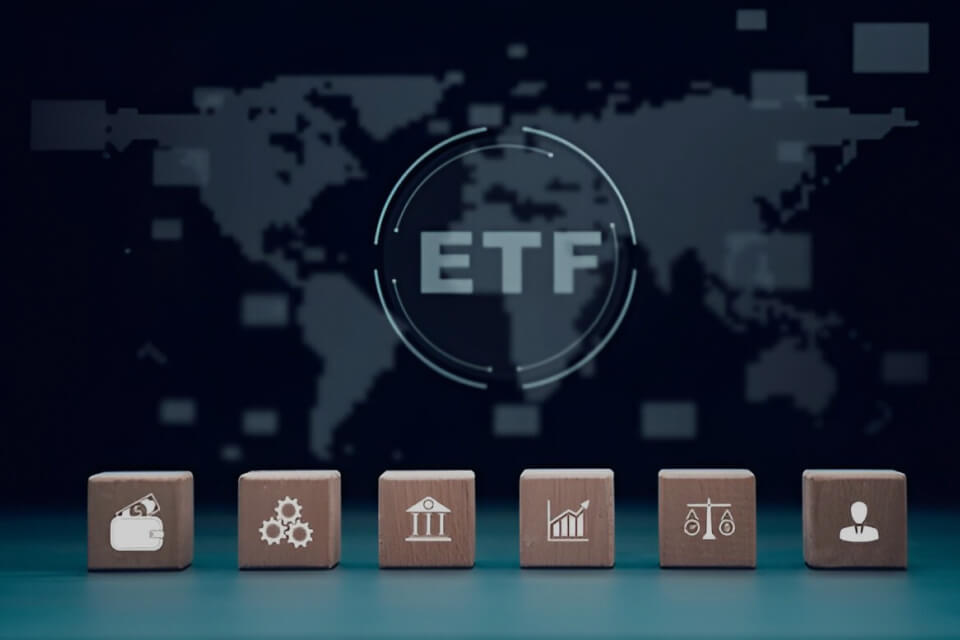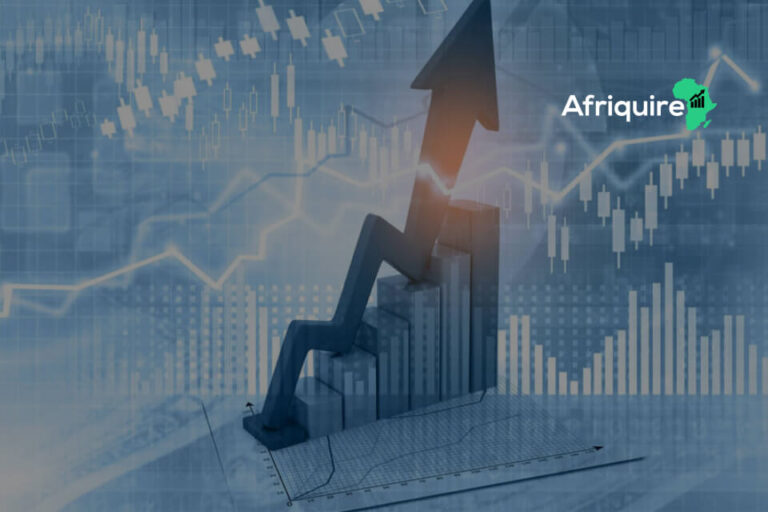- Introduction
- The Significance of International Investing
- Understanding ETFs (Exchange-Traded Funds)
- International ETFs: A Global Approach
- Risks and Challenges of International ETF Investing
- Evaluating International ETF Performance
- Strategies for Incorporating International ETFs in a Portfolio
- Case Studies
- Frequently Asked Questions (FAQs)
- Conclusion
Introduction
Tired of being limited by your local market? Want to tap into the growth potential of global giants like Apple, Amazon, and Tesla? Look no further! Stock Investing in International ETFs is your ticket to financial freedom, offering diversification, flexibility, and professional management. Say goodbye to risk and hello to returns!
In this article, we’ll reveal the power of International ETFs and how they can help you achieve your financial goals. Get ready to take your investments to the next level and join the global investing revolution!”
The Significance of International Investing
For many Africans, investing internationally can seem like a distant dream, a daunting journey into the unknown. But the truth is, it’s a crucial step towards building a resilient and diversified portfolio. Imagine taping into the vibrant tech hubs of Asia, where innovation and growth are redefining the global economy. Or, picture having a stake in the steady and stable economies of Europe, where centuries-old traditions meet modern progress.
By investing internationally, you’re not just spreading your risk but unlocking doors to opportunities your local market might not offer. You’re giving your money the chance to grow in new and exciting ways, to be a part of something bigger than yourself. And, in today’s interconnected world, it’s easier than ever to take that first step. Think of it: with international investing, you can diversify your portfolio beyond the familiar comforts of home. You can invest in companies shaping the future, from electric vehicles to renewable energy, from fintech to healthcare innovation. You can be part of the global growth story without being limited by geographical boundaries.
But we know that taking that first step can be intimidating. We understand that international investing can seem complex, with unfamiliar markets, currencies, and regulations. Starting small is essential, with a solid understanding of your financial goals and risk tolerance. Work with experts who can guide you through the process, helping you make informed decisions every step of the way.
The rewards are worth it. By investing internationally, you can:
– Diversify your portfolio, reducing risk and increasing potential returns
– Tap into growth opportunities in emerging markets
– Invest in companies that are shaping the future
– Gain exposure to new asset classes and sectors
– Enhance your financial security and freedom

Understanding ETFs (Exchange-Traded Funds)
ETFs, or Exchange-Traded Funds, are investment funds traded on stock exchanges, much like stocks. They track indices, commodities, or a basket of assets, offering a cost-effective way to invest in a diversified portfolio. For investors in Nigeria, South Africa, Kenya, and other popular African countries, ETFs provide an accessible means to participate in the global financial market without managing individual international stocks.
Take, for instance, a young Nigerian entrepreneur who started investing in international ETFs. Initially apprehensive, she realized the potential benefits after diversifying her investments beyond the local market. Her portfolio’s growth was more stable, and she felt more secure knowing she wasn’t solely reliant on the Nigerian economy.
International ETFs: A Global Approach
International ETFs allow investors to gain exposure to global markets, providing opportunities to invest in developed, emerging, and frontier markets. These ETFs can include a variety of asset classes, such as equities, bonds, and commodities. For instance, investors in Ghana, Ethiopia, and Uganda can use international ETFs to invest in technological advancements in Asia or economic growth in Latin America, spreading their investment risks across different geographical regions.
Assessing Country and Region Selection
When choosing international ETFs, it’s essential to consider the economic stability, growth potential, and political environment of the target countries and regions. Investors should evaluate factors such as GDP growth, inflation rates, and government policies. For example, South African investors may find it prudent to invest in ETFs focusing on Southeast Asian markets due to their robust economic performance and favorable investment climate.
Currency Considerations
Currency fluctuations can significantly affect the performance of your international investments. For instance, if you’re investing in US-based ETFs and your country’s currency weakens against the dollar, your returns could be adversely affected. Here are some things to consider:
1. Understanding Currency Risk in International Investing*
– Currency fluctuations can impact your portfolio, either enhancing or eroding returns.
– Changes in exchange rates affect the value of foreign investments, regardless of the underlying assets’ performance.
2. Mitigating Currency Risk
– Currency-hedged ETFs can offset the impact of currency movements, providing more stable returns.
– Diversifying investments across various currencies can reduce risk.
– Investing in assets with natural hedges against currency movements, such as multinational companies, can also help manage risk.
3. Key Considerations
– Stay informed about global economic conditions and exchange rate trends.
– Interest rate changes, political instability, and economic policies can cause significant currency fluctuations.
– Evaluate the potential impact of currency movements on your portfolio, especially if you’re a Nigerian investor.
– Align your investment strategy with your financial goals and risk tolerance.
4. Investment Strategies
– Long-term investors may be less concerned with short-term currency fluctuations.
– Short-term investors may prefer hedging currency risk for more stable returns.
– Diversify your portfolio across various currencies and asset classes to reduce risk.

Risks and Challenges of International ETF Investing
Investing in international ETFs has risks and challenges, such as geopolitical instability and market volatility. However, these risks can be mitigated through diligent research and by staying informed about global economic trends.
When you venture into international ETFs, you are opening your portfolio to a world of opportunities and a spectrum of risks that may not be as pronounced in domestic markets. Geopolitical instability, market volatility, currency fluctuations, and regulatory changes are just a few of the hurdles investors face. These challenges can seem daunting, but you can navigate them effectively with a strategic approach and a willingness to stay informed.
Geopolitical Instability
Events such as political elections, changes in government policies, or conflicts can significantly impact the markets. For instance, an unexpected policy change in a country where you hold stock investments can lead to sudden market drops. To mitigate this, staying updated on political developments in the countries you invest in is crucial. Keeping an eye on news and analyses from reliable sources can help you anticipate and react to potential disruptions. Additionally, diversifying your investments across multiple regions can reduce the impact of any single geopolitical event on your overall portfolio.
Market Volatility
International markets can be more volatile than domestic ones due to factors like economic instability, changes in interest rates, and investor sentiment. This volatility can lead to sharp fluctuations in the value of your international ETFs. To manage this risk, consider employing a long-term investment strategy. While short-term market movements can be unsettling, focusing on long-term growth can help you stay committed during periods of volatility. Diversification, again, plays a crucial role here. By spreading your investments across different sectors and regions, you can cushion the impact of market swings.
Currency Fluctuations
The value of your investments can be affected by changes in exchange rates between the Naira and the currencies of the countries where you hold stock investments. For instance, if your country’s currency weakens against the dollar, your returns from US-based ETFs may diminish. One way to address this risk is by considering currency-hedged ETFs, designed to reduce currency movements on your returns. This approach can provide more stable returns, especially in volatile currency environments.
Regulatory Changes
Different countries have varying regulatory frameworks, and changes in these regulations can impact market performance. Keeping abreast of regulatory news and understanding the legal landscape of the countries you invest in can help you anticipate and react to such changes. Working with a financial advisor specializing in international investments can provide valuable insights and guidance.
It’s essential to conduct thorough research before making any international stock investments. Understanding the economic fundamentals of the countries you’re investing in can provide a solid foundation for your decisions. Look into GDP growth, inflation rates, and trade balances. These indicators can give you a clearer picture of different regions’ economic health and potential.
Maintaining a balanced perspective is key. While international ETFs offer the potential for high returns, they also come with inherent risks. It’s important to align your investments with your risk tolerance and financial goals. If you’re a risk-averse investor, you might want to limit your exposure to highly volatile markets and focus on more stable regions. On the other hand, emerging markets could be worth exploring if you’re willing to take on higher risk for potentially higher returns.
While investing in international ETFs comes with its own risks and challenges, these can be managed through diligent research, diversification, and staying informed about global economic trends. Understanding and preparing for the potential hurdles allows you to make more informed and confident investment decisions, ultimately building a more resilient and diversified portfolio.
Evaluating International ETF Performance
To assess the performance of ETFs, investors should analyze key metrics such as total return, expense ratio, and tracking error. Comparing the performance of the ETF to its benchmark index provides insight into its effectiveness in replicating the index’s returns. Additionally, investors should consider the ETF’s historical performance, considering its performance during different market cycles.
Top International ETFs to Consider
1. Vanguard FTSE Emerging Markets ETF (VWO)
– Exposure to emerging markets such as China, Brazil, and India.
2. iShares MSCI ACWI ex U.S. ETF (ACWX)
– Provides broad exposure to global markets outside the United States.
3. SPDR S&P Global Dividend ETF (WDIV)
– Focuses on high-dividend-yielding companies worldwide.
4. iShares Currency Hedged MSCI EAFE ETF (HEFA)
– Mitigates currency risk while investing in developed international equity markets.
5. Invesco S&P International Developed Low Volatility ETF (IDLV)
– Targets developed markets with a focus on low-volatility stocks.
Tax Implications of International ETF Investing
Tax considerations are critical when investing in international ETFs. Different countries have varying tax treaties and regulations that can affect the overall tax burden on investment returns. African investors must know the tax implications in their home country and the countries where the ETFs are domiciled. Consulting with a tax professional can help navigate the complexities of international tax laws and optimize tax efficiency.
Strategies for Incorporating International ETFs in a Portfolio
Incorporating international ETFs into your portfolio can be a powerful way to diversify investments, reduce risk, and potentially enhance returns. Several strategies to achieve this include the core-satellite approach, geographic diversification, and sector diversification.
1. The Core-Satellite Approach
The core-satellite approach is a popular investment strategy where a core portion of the portfolio is allocated to low-cost, broadly diversified investments, such as domestic ETFs or index funds. The core aims to provide stable, long-term growth and often comprises well-established markets and sectors. On the other hand, the satellite portion consists of smaller, more targeted investments, such as international ETFs. By including international ETFs in the satellite portion, investors can gain exposure to specific regions or markets with the potential for higher growth. This approach allows investors to maintain a solid foundation with their core investments while taking advantage of the opportunities offered by international markets.
2. Geographic Diversification
Geographic diversification is another essential strategy for incorporating international ETFs into a portfolio. By investing in ETFs that cover various regions worldwide, investors can spread their risk across multiple markets. This is particularly important because economic conditions, political events, and market trends can vary significantly from one region to another. For example, an investor might include ETFs focusing on emerging markets, developed markets outside their home country, or specific countries with strong economic growth prospects. By diversifying geographically, investors can mitigate the impact of a downturn in any single market and potentially benefit from growth in other regions.
3. Sector Diversification
Sector diversification is also a key strategy when adding international ETFs to a portfolio. Different sectors of the economy often perform differently depending on the economic cycle and regional factors. By investing in international ETFs that cover various sectors, such as technology, healthcare, or consumer goods, investors can spread their risk and take advantage of sector-specific growth opportunities. For instance, a technology-focused international ETF might provide exposure to innovative companies in Asia, while a healthcare ETF could include leading pharmaceutical firms in Europe. Sector diversification helps to ensure that the portfolio is not overly reliant on any single industry, which can be particularly beneficial during periods of sector-specific volatility.
Incorporating international ETFs into a portfolio also provides access to global investment opportunities that might not be available in domestic markets. Many international companies are leaders in their respective industries and offer growth potential that can enhance overall portfolio performance. Additionally, investing in international ETFs can provide exposure to different currencies, further diversifying and potentially strengthening a portfolio.
Incorporating international ETFs into a portfolio through strategies like the core-satellite approach, geographic diversification, and sector diversification can help spread risk and enhance potential returns. By taking advantage of global markets and sectors, investors can create a more balanced and resilient portfolio that is better equipped to navigate the complexities of the worldwide economy.
For example, an investor in Tanzania who successfully integrated international ETFs into her portfolio by adopting a balanced approach and regularly reviewing her investment strategy achieved steady growth and reduced her overall risk.
Case Studies
1. iShares MSCI Emerging Markets ETF (EEM)
The iShares MSCI Emerging Markets ETF (EEM) is widely used by investors seeking broad exposure to emerging markets. Its inclusion in a diversified portfolio has provided African investors with significant growth opportunities while spreading investment risk across multiple countries.
2. iShares Currency Hedged MSCI EAFE ETF (HEFA)
The iShares Currency Hedged MSCI EAFE ETF (HEFA) is designed to provide exposure to developed international equity markets while mitigating currency risk. This ETF has benefited investors in volatile currency environments, including many African nations.
3. Vanguard FTSE Emerging Markets ETF (VWO)
The Vanguard FTSE Emerging Markets ETF (VWO) is a popular international ETF that provides exposure to stocks in emerging markets such as China, Brazil, and India. It has been a beneficial investment for many African investors looking to capitalize on the rapid growth in these regions while diversifying their portfolios.
4. SPDR S&P Global Dividend ETF (WDIV)
The SPDR S&P Global Dividend ETF (WDIV) focuses on high-dividend-yielding companies across the globe. It has been a valuable investment for those seeking income and international diversification, including African investors looking for stable dividend-paying stocks.

Frequently Asked Questions (FAQs)
1. What are International ETFs?
International ETFs are exchange-traded funds that invest in markets outside the investor’s home country, offering exposure to global markets.
2. How do currency fluctuations impact international ETF investments?
Currency fluctuations can affect the returns on international ETF investments, either positively or negatively. Currency-hedged ETFs can help mitigate this risk.
3. What are the benefits of investing in international ETFs?
Benefits include diversification, exposure to global growth opportunities, and potential risk reduction compared to domestic-only investments.
4. What should investors consider when selecting international ETFs?
Investors should consider factors such as economic stability, growth potential, political environment, and currency risk of the target countries and regions.
5. Are there any tax implications for investing in international ETFs?
Yes, tax implications vary by country. It’s important to understand the tax regulations in both the investor’s home country and the countries where the ETFs are domiciled.
Conclusion
Investing in International ETFs offers a powerful strategy for new investors, especially Africans and investors in third-world countries, to achieve financial independence and build a resilient, diversified portfolio. By understanding the benefits, risks, and strategies associated with these investments, investors can make informed decisions that align with their financial goals. With access to global markets, professional management, and the flexibility to respond to changing conditions, International ETFs present an accessible and effective means to grow wealth amidst economic uncertainties.



